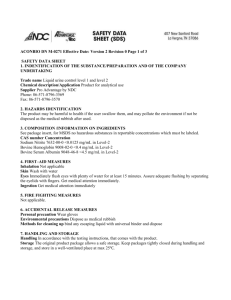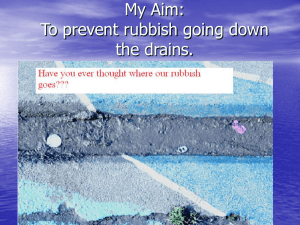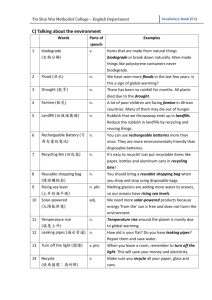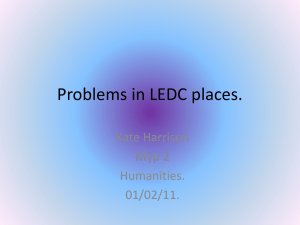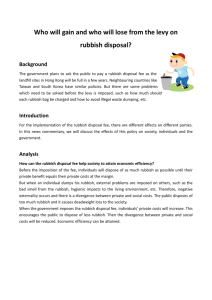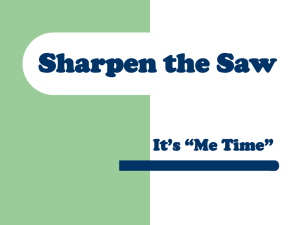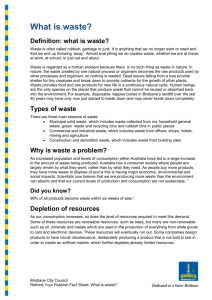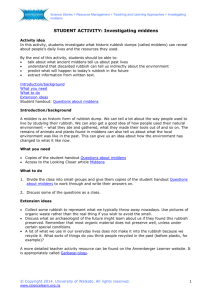Special Places - Curriculum Support
advertisement
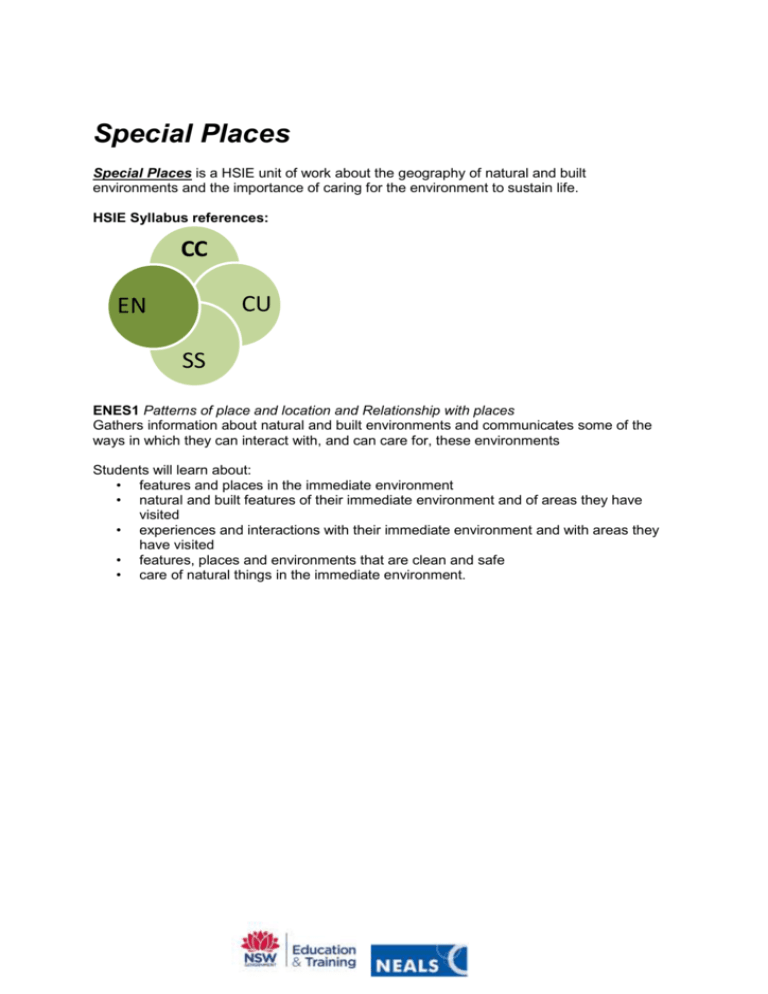
Special Places Special Places is a HSIE unit of work about the geography of natural and built environments and the importance of caring for the environment to sustain life. HSIE Syllabus references: CC CU EN SS ENES1 Patterns of place and location and Relationship with places Gathers information about natural and built environments and communicates some of the ways in which they can interact with, and can care for, these environments Students will learn about: • features and places in the immediate environment • natural and built features of their immediate environment and of areas they have visited • experiences and interactions with their immediate environment and with areas they have visited • features, places and environments that are clean and safe • care of natural things in the immediate environment. Teaching and learning Evidence of achievement My place, my home • Using Google Earth, students journey from space to visit their local neighbourhood (by inserting a local address in the Search function in the side menu). Students identify places they go to and use in the local neighbourhood – include places with significant natural features e.g. beach, park, bush, creek, and places that are built e.g. playground, church, friends/relatives houses, shopping centre. • Using the ‘street view’ option in Google Earth students journey into street bubbles and talk about features of the environment they observe. They identify features that are built by people (manmade) and features that are natural. • Introduce the term ‘environment’ as meaning a place or a space. Explain that our environment is made up of manmade and natural places. ENES1 Gathers information about natural and built environments and communicates some of the ways in which they can interact with, and can care for, these environments • describes natural and built environments of personal significance. Observing the school environment Students walk around the school playground and find a spot that is special. Explain that the activities are about using our senses to learn about the spot. Students sit quietly and listen to the sounds for 60 sec with their eyes closed. They recall and mimic the sounds they can hear. Give each child a colour and they find something in the space to match the colour. They share their discovery with a friend Students follow a scented trail (created by the teacher) smelling everything along the way e.g. grass, soil, leaves, flowers. Students describe all the different smells they came across. Blindfold partners – in pairs students are given a blind fold – one student is blindfolded and the partner leads them by the hand to three different objects. The blindfolded student feels, scratches and sniffs the object and is then led away. The blindfold is removed and students rediscover the objects they experienced and share information about textures, shapes and smells. Photographic partners – in pairs students take turns at playing a camera and a photographer. The photographer covers the camera’s eyes and takes a photo by uncovering the camera for 5 seconds to view a specific scene. The camera is led away and then has to recount the detail of the scene. This is repeated in three different locations: from a long way, from close up and from an in between distance. Have students re-visit their favourite personal place at school and take a photograph of the place using a digital camera. Using the recorded images on the IWB students respond to the question: When I am in my special place I feel..................My special place is important because....... Special places at home Students identify a place that is special to them at home. They respond to questions: - is this outside or inside? - what do you do in that place? Teaching and learning - what do you find in that place? Refer to the activities used in the previous activity. - why is it special? What do you do there? What things would you find there? Students draw a picture of their special place at home. They talk about their picture with a partner, group or class and tell what makes it special to them by responding to questions: - what do you hear when you are in your special place at home? - what do you feel when you touch things in your special place? - who do you share it with? - why is it special? • Choose two or three of the student’s pictures to model the writing of a short descriptive sentence to accompany their work. Students, with assistance, write their own short descriptive sentences. • Select books that explore special places to read as a class e.g. Moving house – Rebecca Hunter; A new room for William – Sally Grindley and Carol Thompson; Minto goes home – Anna Fienberg and Kim Gamble; No place like home – Colin Thompson and Anna Pignataro. Evidence of achievement Teaching and learning Evidence of achievement Our place our school Walk around the school taking digital photos of the different places in the school environment. • Discuss simple directions such as, ‘where is the library?’ and ‘what is the best way to get there?’ • Discuss the position of objects on the class walk. Ask: - where are you now? - what is next to the garden? - what is behind the wall? • Have students describe places in terms of location and their location in relation to other places e.g. behind, beside, across, next too. • Print and label the places in the photos and talk about the purpose and use of each place. Add these words to a class word bank. ENES1 Gathers information about natural and built environments and communicates some of the ways in which they interact with, and can care for, these environments • observes and identifies natural and built features of the school environment • suggests purposes and uses of different places. Introduce the terms ‘natural’ and ‘built’ when discussing features of the immediate environment, and stress that built features are made by people. • Give students an enlarged photocopy of one of the photos. Students cut up the photo and sort the objects in the photo into natural features and built features. Paste objects into groups onto A3 art paper. This can be adapted for use with an IWB. • Word/ image wall grouping natural features of the environment and built feature and things that come in between Use reading material from www.starfall.com – I’m Reading Fiction and Non Fiction Texts ‘Its Earth Day and Dear Dragon – to assist students to differentiate between natural, built, real and imaginary features. Looking after our environment at home and at school • Develop students’ understanding of caring for the natural environment by planting a class tree (native or Indigenous) in the playground. Students undertake to care for the tree. Discuss and identify strategies to protect the tree from damage by students’ play activities. Discuss the values associated with taking care to not damage other plants and features of the natural environment. Relate the school situation to out of school activities e.g. not picking wild flowers or damaging plants, keeping domestic animals out of bushland, moving rocks. • Discuss the effect of rubbish on the natural environment. Use images of natural environments polluted by rubbish. Include images of Australian wild animals, fish and birds that have been affected by rubbish pollution. • Discuss where rubbish goes. Ask: - what could happen if rubbish is not put in bins? - how could rubbish lead to an unhealthy situation? - how can we have less rubbish? • Ask students how they might prevent rubbish from collecting ENES1 Gathers information about natural and built environments and communicates some of the ways in which they interact with, and can care for, these environments • participates in caring for the natural environment • articulates reasons for caring for the natural environment • identifies reasons for disposing of rubbish appropriately • participates in recycling activities. Teaching and learning in areas of the school playground. • Conduct a picture talk on clean/unclean environments, using an image that portrays a clean/unclean environment. Ask students to give words to describe the difference between clean and unclean. Recycling What can you do to help the environment? • Students sort rubbish from lunch boxes into groups to decide: - what can be recycled? - what can be composted? - what goes in the bin? • Discuss what is being done at school and at home to recycle. Assessment strategy The teacher: • analyses questions/answers –why the tree needs to be cared for and protected • analyses student’s explanation of the effect of rubbish on the environment • observes demonstrated ways of caring for the immediate environment. Assessment criteria The student: • talks about caring for the natural environment • explains the effect of rubbish on the environment • participates cooperatively in caring for the immediate environment. Evidence of achievement
